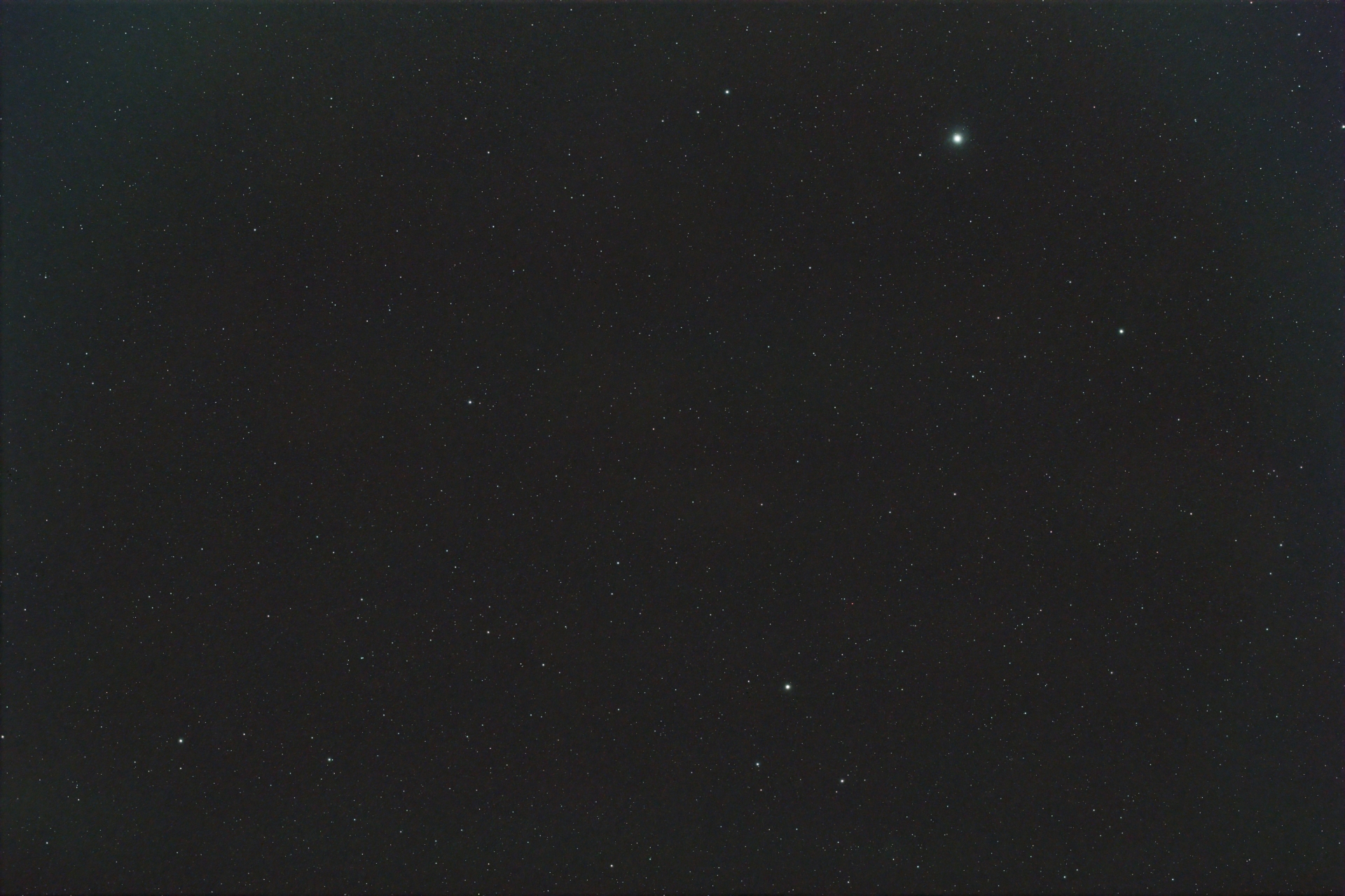Witch Head Nebula..?
| Photo Notes | |
|---|---|
| ISO | 5000 |
| Exposure | 180s |
| # of Frames | 7 |
| Filter | SV220 |
| Processing | PixInsight |
I’m embarrassed to admit any of this, but the point of starting this adventure was to learn…so here goes:
I haven’t really considered what the constellations being seasonal means. They’re always out there whether or not we can see them; WE’RE the weirdos careening around on a tiny space rock. If I put a paper bag on my head, I may not be able to see my neighbor’s house…but it’s probably still there and largely unaffected by my antics.
However, in the context of astrophotograhy, the observing season for things is shockingly short. The Witch Head Nebula is only visible (from here) between about October and March. Additionally:
- The sun needs to be pretty far below the horizon
- The object needs to be pretty high above the horizon (so you’re not looking through a whole bunch of atmosphere, or in my case trees)
- The moon should ideally be otherwise occupied
Best case, in the heart of this object’s season, I can see it for maybe five hours per night in 10 night chunks.
The rest of the time, paper bag.
I learned this, and was immediately in a rush to shoot the Witch Head Nebula. I didn’t take the time to learn anything other than its whereabouts (whenabouts?)…or I would have discovered that it is a really faint object probably not suited to shooting through a bunch of light pollution.
Also, this is a reflection nebula, which means it is illuminated by starlight from Rigel. My narrowband filter basically makes it invisible.
If that wasn’t enough, I only got about 20 minutes of imaging before clouds–which were in the forecast I didn’t read–appeared.
After all of that, I’ve decided I’m not going to prioritize things based on availability calculations. Obviously, I’m not in a race to discover the cosmos–I’m going to take pictures of things I am curious about, can see, and read a bunch about them!

